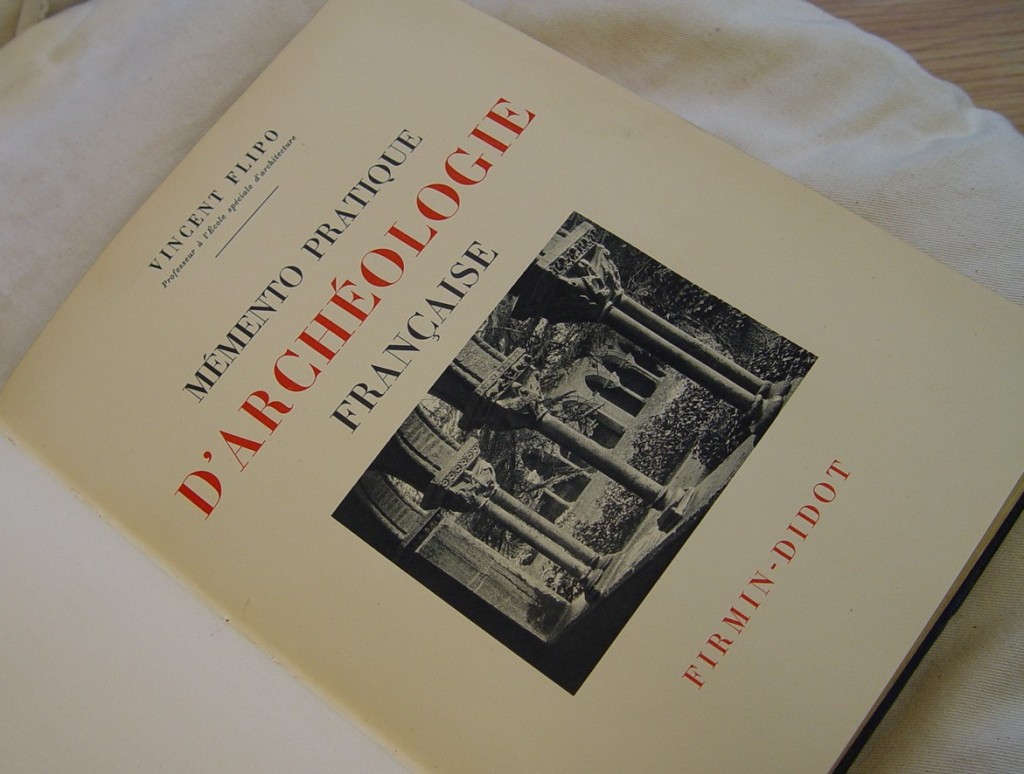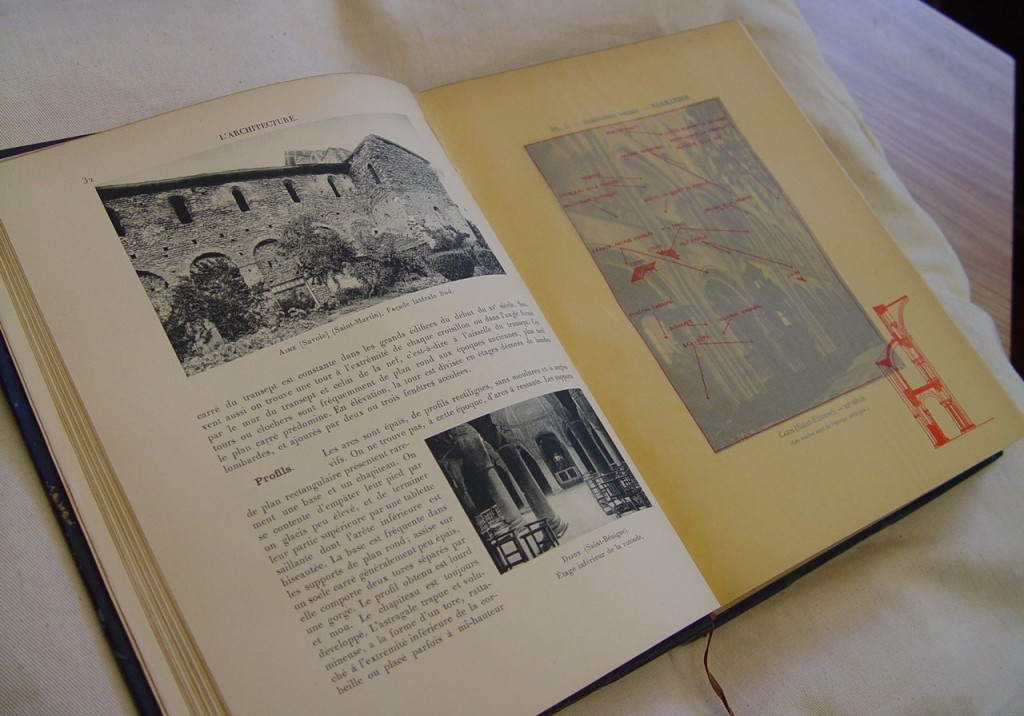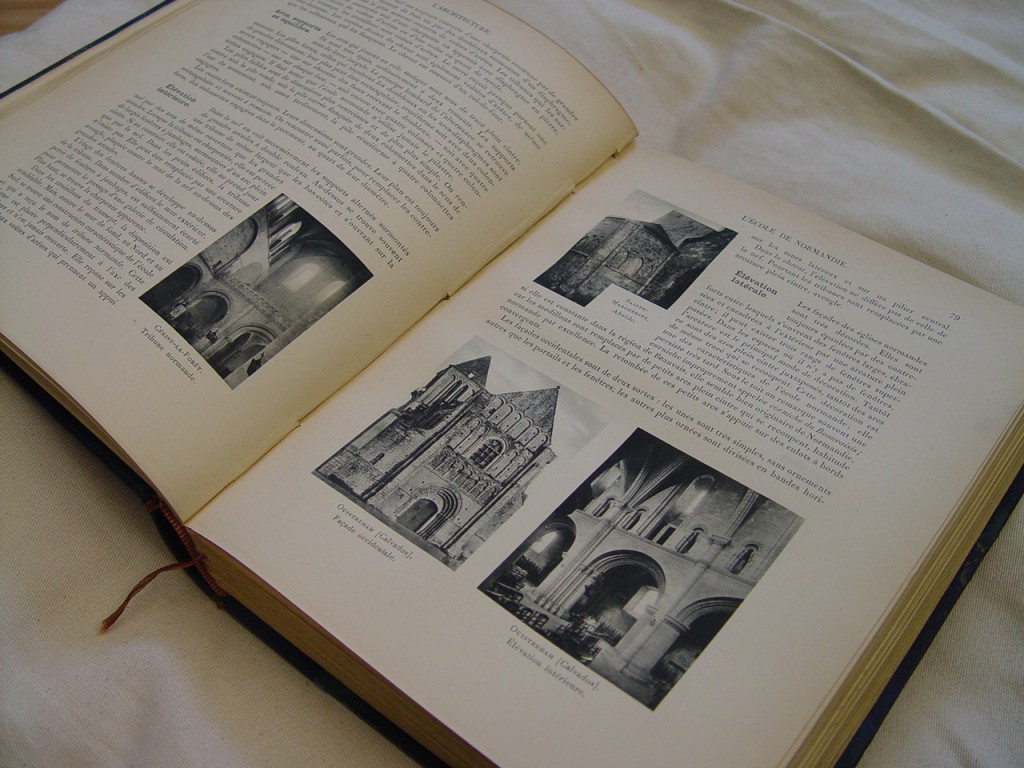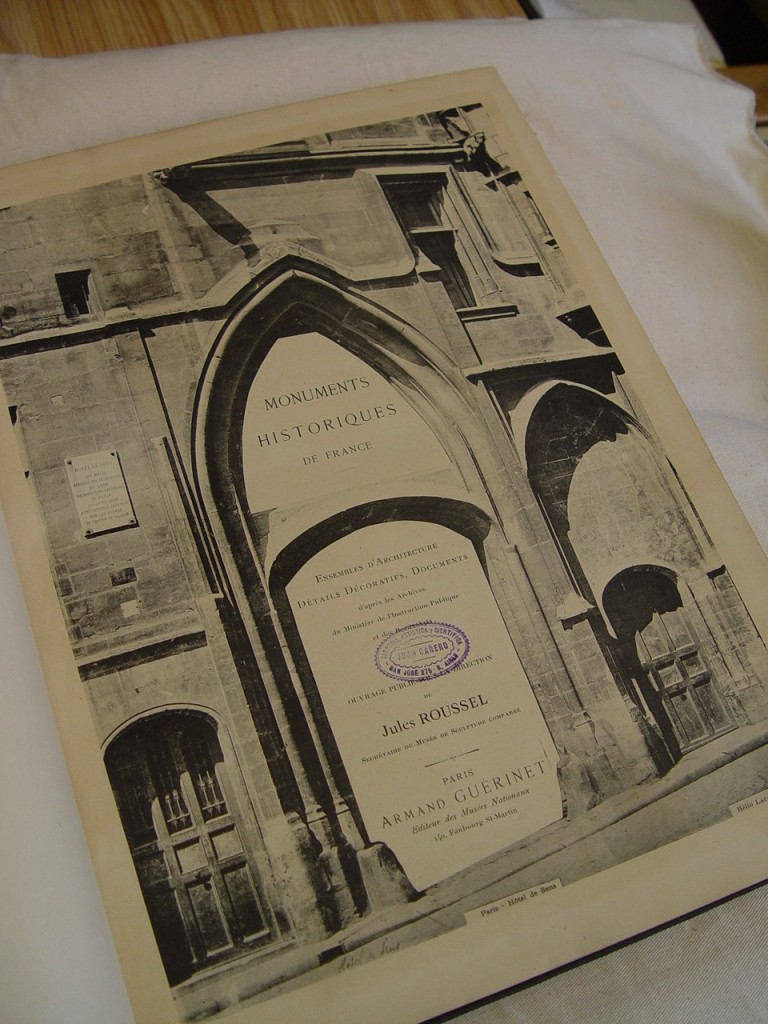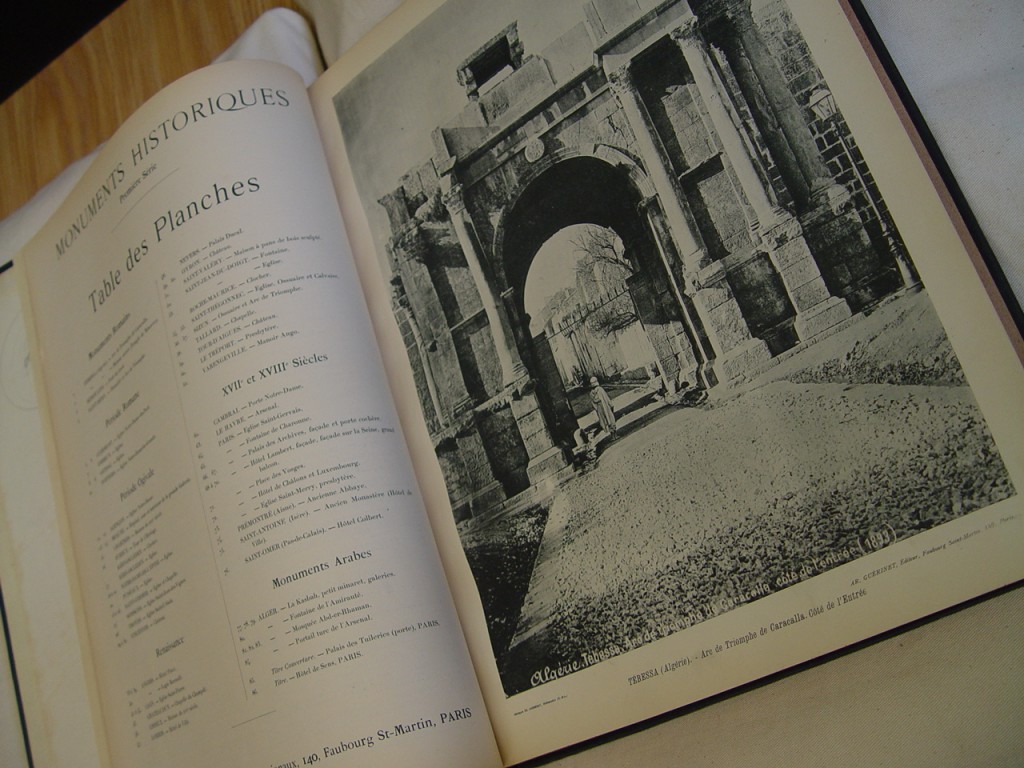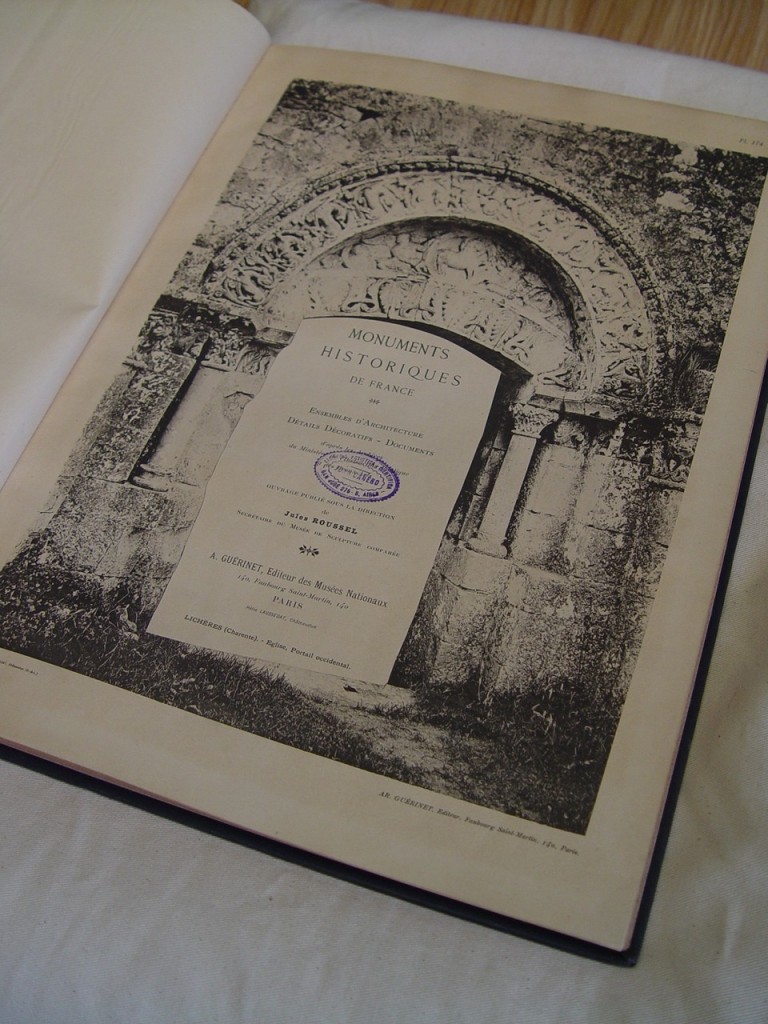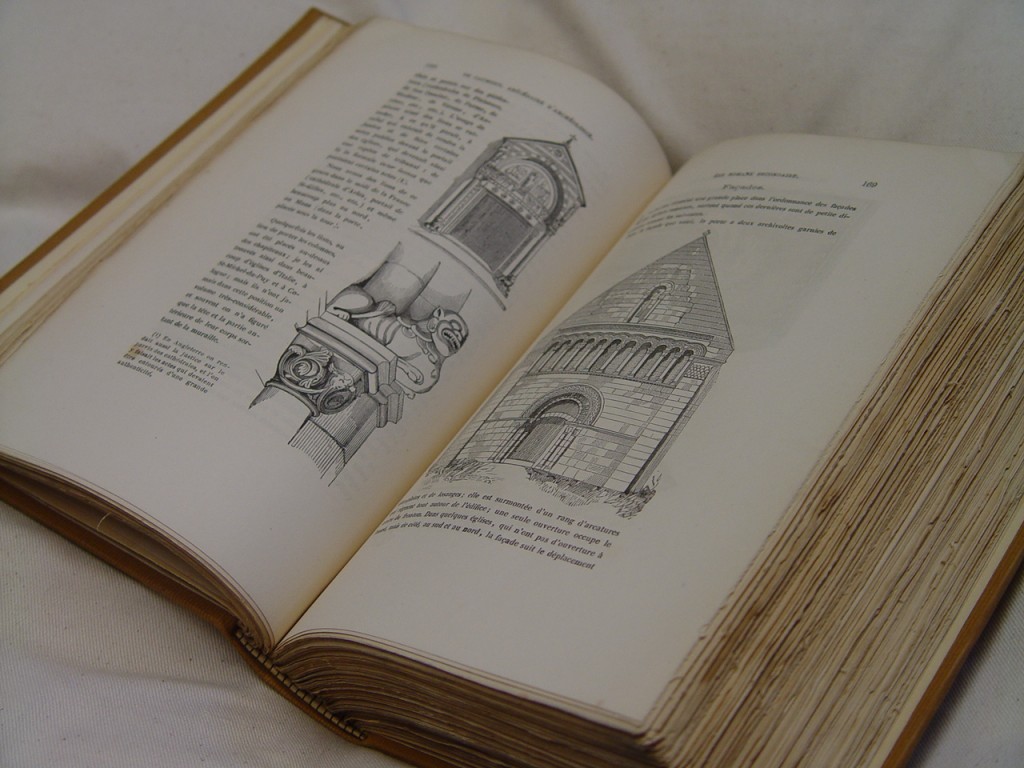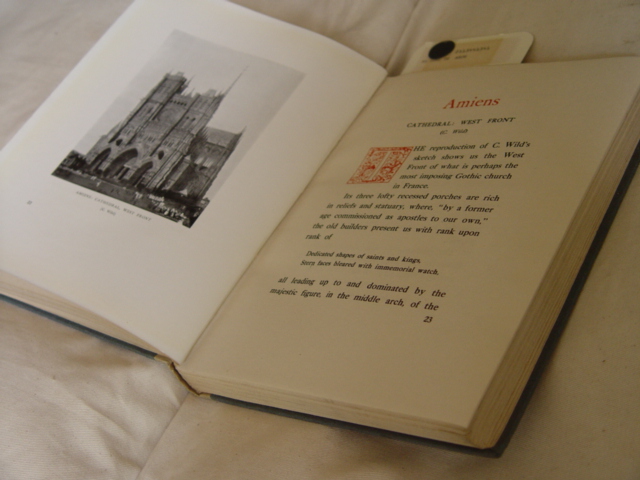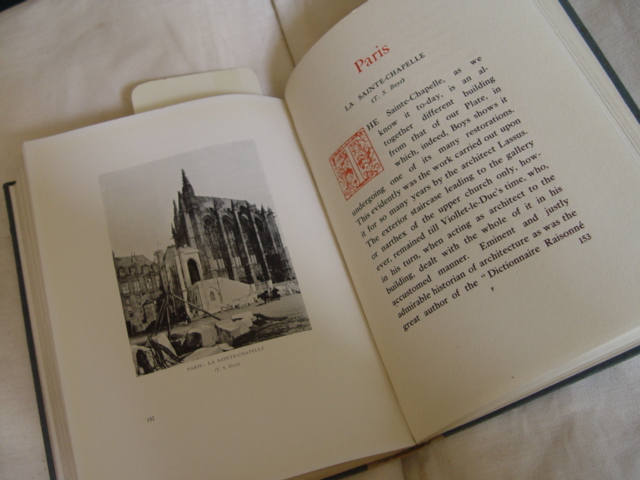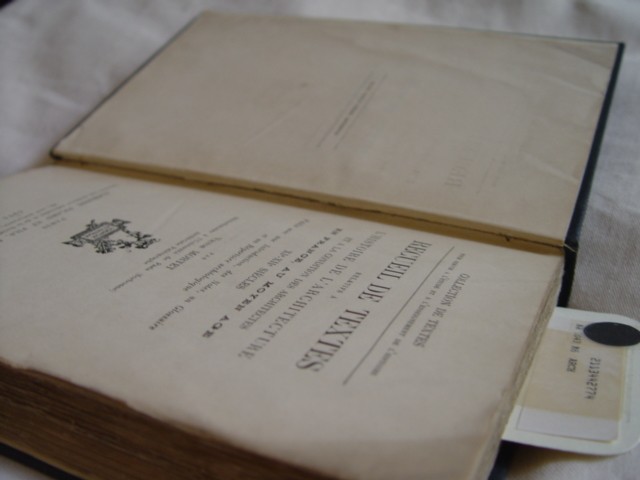Flipo, Vincent. Mémento Pratique d’Archéologie Française: Illustré de 700 Gravures dans le Texte et de 18 Hors-texte, Tirés en Héliogravure. Paris: Firmin-Didot, c. 1930.
Collection: Cret
In the spirit of turn-of-the century positivism, Vincent Flipo’s French-language Mémento Pratique d’Archéologie Française represents an effort to reduce the architectural to taxonomic components. Flipo organizes his study rather conventionally, beginning with a chapter on materiality, but quickly moves on to a chronology of building type. This allows Flipo to establish the basic building blocks that organize medieval architecture, focusing large sections of text on each component. As he progresses, Flipo charts the evolution of earlier models, documenting them textually and with renderings of architectural components, plans and sections, and black and white photography occasionally overlaid with plan data. Flipo focuses his study on religious architecture evolution of building typologies and iconography as the Gothic becomes increasingly attenuated and ogival.
Library of Congress call number: NA 1041 F5

